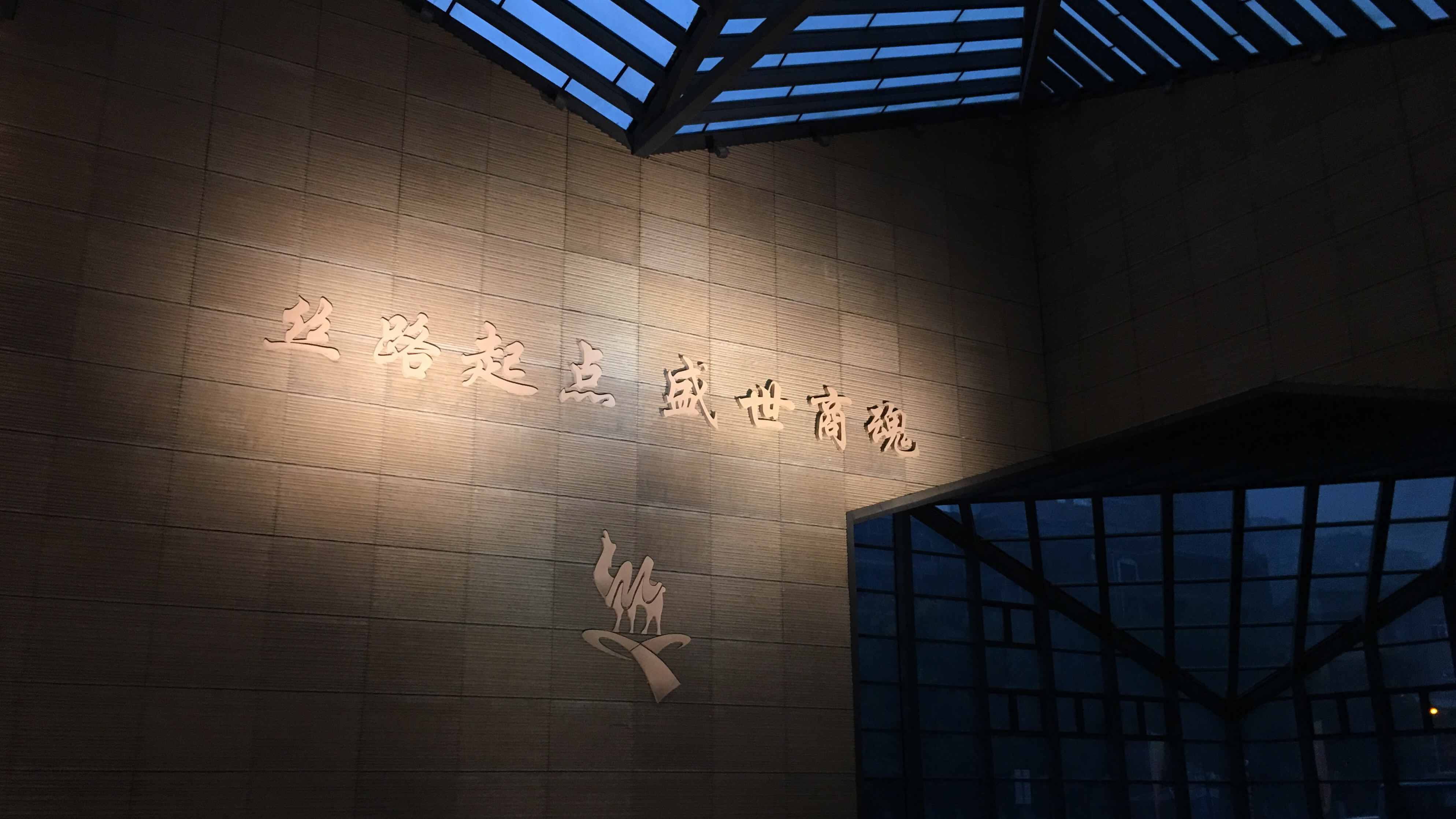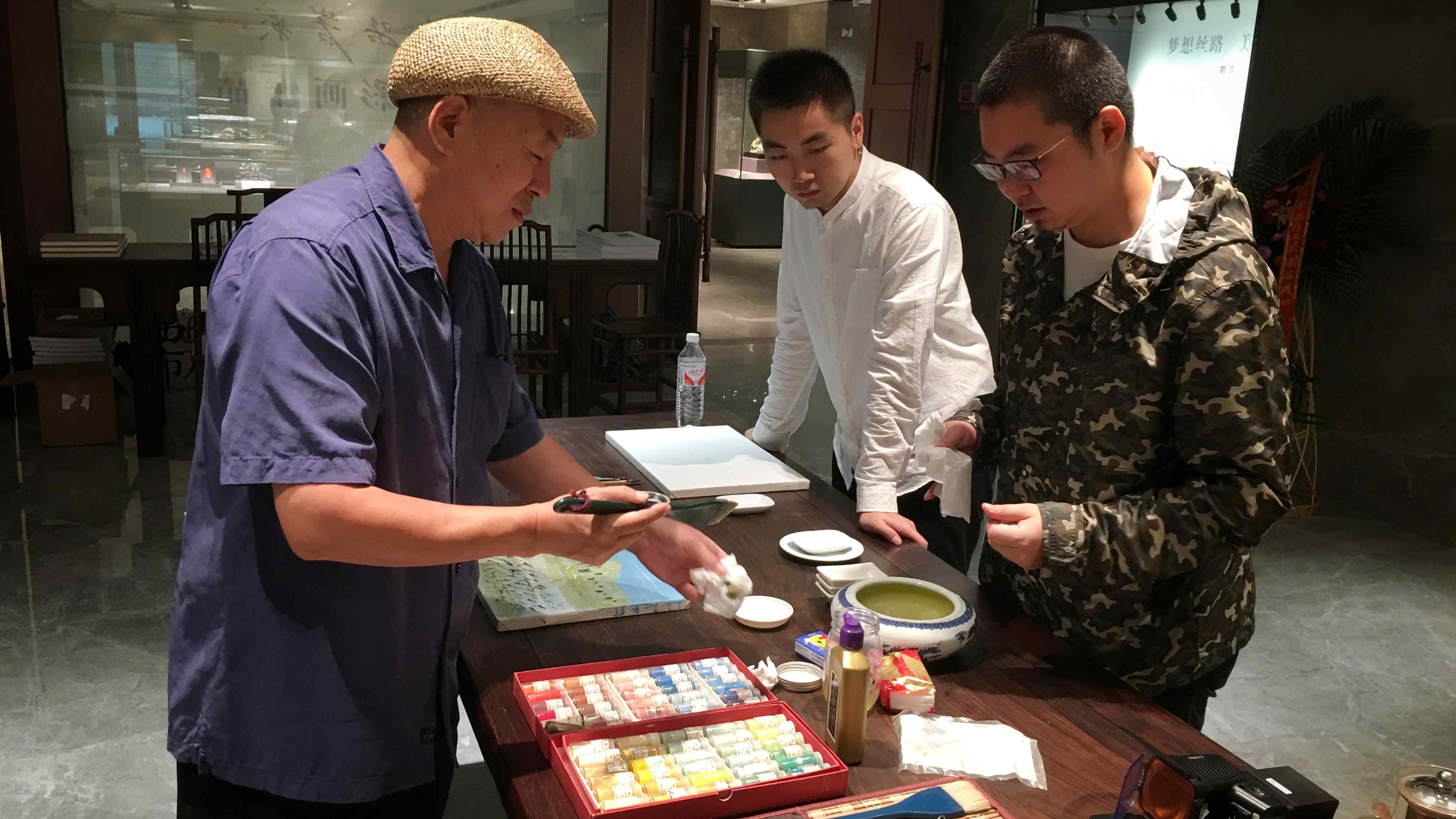
Culture
08:53, 10-Sep-2017
50 museum representatives support collaboration in Xi’an
By Zheng Yibing and Li Yang

Representatives from some 50 museums along the route of the ancient Silk Road have met in Xi’an in northwest China’s Shaanxi province during a culture week. The meeting is part of a cultural initiative to promote communication and cooperation between museums and art groups. Xi'an's Tang West Market museum is hosting the event.
When you go into the museum, you can have a glimpse into the ancient Silk Road. The Tang West market museum takes people back to the start of China’s glorious Tang Dynasty some 1,400 years ago. A curator explains the historical importance of the museum's location.

Tang West Market Museum is located at a site which is said to be the start of the ancient Silk Road in Chang’an, the capital of ancient China’s Tang Dynasty (618-907 AD). /CGTN Photo
Tang West Market Museum is located at a site which is said to be the start of the ancient Silk Road in Chang’an, the capital of ancient China’s Tang Dynasty (618-907 AD). /CGTN Photo
Wang Bin said the site of the museum was once the international business hub of Chang’an, the capital of ancient China's Tang Dynasty.
This is the second year in a row that the museum has been chosen to host the Silk Road Museum Alliance's cultural exchange event.
Wang added that the meeting aims to increase communication and interaction between museums, especially on exchanges of artifacts, exhibits and staff members, as well as cultural items.

Thanks to the Silk Road Museum Alliance, artifacts and cultural products from countries along the ancient Silk Road are displayed in Tang West Market Museum in Xi’an. /CGTN Photo
Thanks to the Silk Road Museum Alliance, artifacts and cultural products from countries along the ancient Silk Road are displayed in Tang West Market Museum in Xi’an. /CGTN Photo
Organizers invited curators and staff from museums along the ancient Silk Road and other museums to attend the annual event.
Alexander Sedov, the director general of Russian State Museum of Oriental Art, is among the guests. He said he values the interaction and believes different cultural elements are needed to form a complete picture of human history, like in his own life.
"This can be seen in the many artifacts and cultural items from different countries in the Tang West Market Museum. Together, they show the beauty of living and working together," he said.
"For the Silk Road museums’ meeting and the culture week this year, the participants are not only the curators and researchers but also the artists who try to revitalize ancient artistic techniques," he added.
For Wang Xiongfei, rock-color painting is a good way to arouse the interest of international viewers, especially those from Silk Road countries.

Wang Xiongfei from China Academy of Art is devoted to rock-color painting, an ancient art technique applied mostly in cave paintings along the Silk Road countries. /CGTN Photo
Wang Xiongfei from China Academy of Art is devoted to rock-color painting, an ancient art technique applied mostly in cave paintings along the Silk Road countries. /CGTN Photo
He uses an ancient and almost forgotten artistic technique to create his art, utilizing a rare rock powder to paint on walls.
Wang said that such painting has a long history in countries along the Silk Road. From India’s Ajanta paintings, to central Asia, Pakistan and Afghanistan, almost all cave paintings were rock-color paintings. "Visitors from those areas feel a sense of familiarity... a true sense of communication between cultures," he said.
Wang’s art pieces are part of efforts to revitalize the history of the ancient Silk Road, and to open a new chapter for the future. The curator of the Tang West Market Museum shares this same wish.

Ancient rock-color paintings now are more accepted and deemed as a symbol of the ancient Silk Road.
Ancient rock-color paintings now are more accepted and deemed as a symbol of the ancient Silk Road.
Wang Bin said that the communications and exchanges between these museums are hoped to bring about a mutual understanding and a friendship among people along the Silk Road.
In this spirit, the museum alliance began their cooperative efforts at this ancient relic, which once marked the start of the Silk Road.
916km

SITEMAP
Copyright © 2018 CGTN. Beijing ICP prepared NO.16065310-3
Copyright © 2018 CGTN. Beijing ICP prepared NO.16065310-3